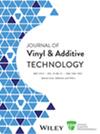Revealing the unique characteristics and strength of polycarbodiimide as an accelerator-free crosslinker for low-temperature processing of carboxylated nitrile butadiene rubber gloves for hand protection
Abstract
Carboxylated nitrile rubber (XNBR) gloves with sulfur crosslinked system consist of accelerators that pose a Type IV allergies problem with a risk to harm the health of the user. Alternative crosslinking system such as accelerator-free (AF) crosslinker has been found and established to combat the health issues as replacement to the conventional crosslinker. This work emphasized the use of polycarbodiimide (PCDI) as a crosslinker, particularly PCDI with zinc oxide (ZnO) crosslink system. The effectiveness of PCDI as an AF crosslinker was compared with two conventional crosslink systems: sulfur with ZnO and ZnO only system. The swelling test results show the crosslink density of PCDI crosslink system achieved comparable value with conventional systems. It is expected that XNBR gloves with PCDI imposed superior mechanical and physical properties as sulfur system due to the formation of ionic crosslink resulting in much denser polymer network. The new PCDI crosslinker system offer cost reduction to gloves manufacturer as it can be cured at low temperatures from 60 to 80°C comparing to sulfur crosslinked system that normally cured at 140°C. PCDI offered a new generation of AF crosslinker in XNBR gloves with lower curing temperatures and to tackle health hazards, in place of the conventional crosslinker.
Highlights
- Emphasizes a significant change or improvement in the field of hand protection.
- Suggests that polycarbodiimide possesses distinctive qualities that set it apart from other materials.
- Highlights polycarbodiimide's effectiveness as a crosslinker without the need for accelerators, which are commonly used in rubber processing
- Indicates a novel approach to processing rubber gloves, potentially reducing energy consumption or enabling new applications.
- Specifies the type of gloves being discussed, indicating a focus on a specific material or product.



 求助内容:
求助内容: 应助结果提醒方式:
应助结果提醒方式:


